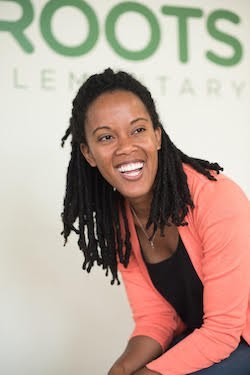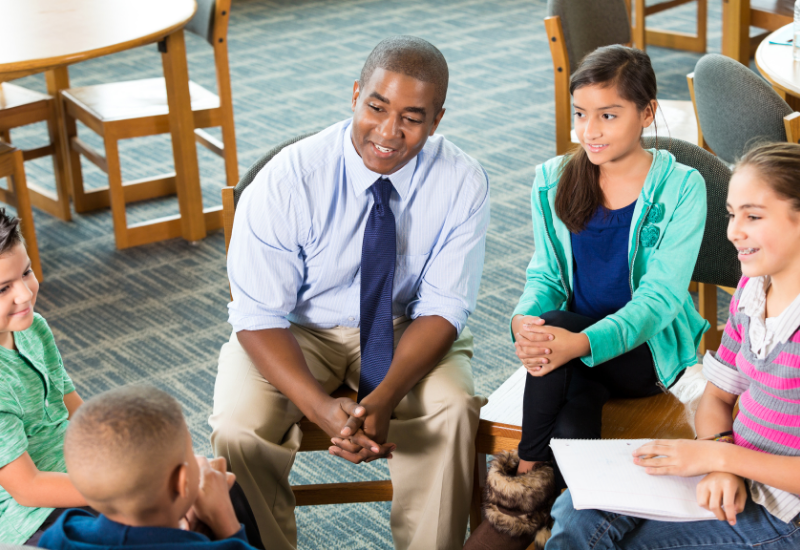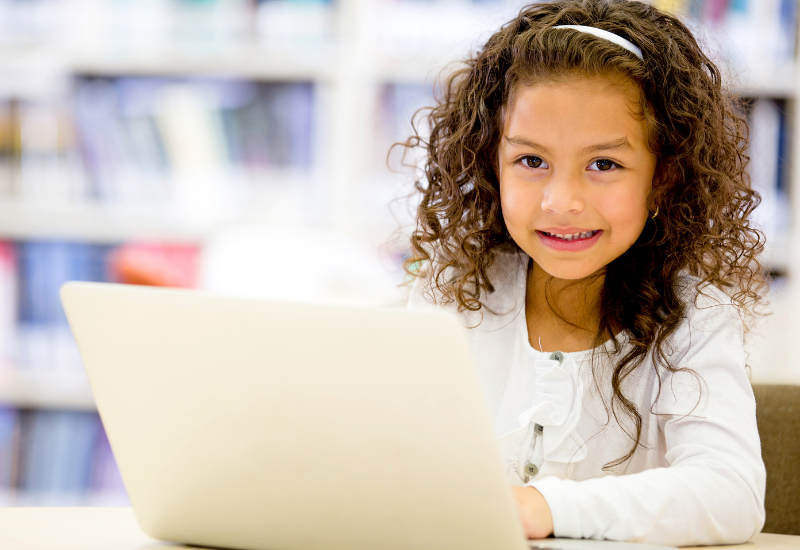Roots Director of Operations and Innovation Provides an Overview of the Physical Space
Roots Director of Operations and Innovation, Jill Tew, shares how physical space is used differently at the school to accommodate and enable personalized learning.

Transcript: Jill Tew: the space at Roots looks a little bit different from a traditional school. We don’t have self-contained classrooms where the same child sits in the same classroom, with the same 25 other kids and the same teacher every day. The space is laid out in a way it allows for much more movement throughout the day, which to us equates to more choice for students in how they’re spending their time. So, we have a large open area called The Grove, where there are five different centers of activities where students can spend their time, rotating from the library, to the writing center, to the maker space – all over the course of their morning, and that’s based on the schedules that teachers have put together for scholars based on their needs, their gaps, their interests, and how they learn best. So, the space really mimics – the amount of options that we want on the table and that menu for kids, so that they’re able to, over the course of their time at Roots, start having a more active role in shaping their own day, and what they’re spending their time doing. So, The Grove is kind of the heart of our model where about 100 kids between two – sometimes three kind of grade levels are overlapping, and then around The Grove on the periphery we have classrooms of different sizes as well, which again gets back to our focus on choice and options being the best path to customization so that you have a choice as a teacher of which classroom you’re going to use for a lesson. If that lesson makes more sense as a small group instruction, you’re going to pull five or six scholars into a small group room that really is only the size for a kidney table, maybe some materials for you and the small group you’re with. But if you’re doing a whole group read-aloud and you want kind of the larger, more heterogeneous mix of scholars in that group, you would go into the more traditionally-sized classroom for read-aloud time on the carpet.
Explore More

Creating In-Person Opportunities for Virtual Students
Virtual schools can set up physical, in-person locations where students can work on assignments, seek help from teachers, and socially...

Community Cares Program
Monterey Peninsula partnered with local nonprofits and city groups to offer on-site learning support and enrichment opportunities for...

Leveraging Community Partnerships To Build a City-Wide Plan
To make a return to in-person learning after school building closures, Meriden Public Schools partnered with local health officials and...